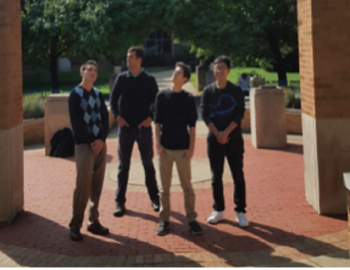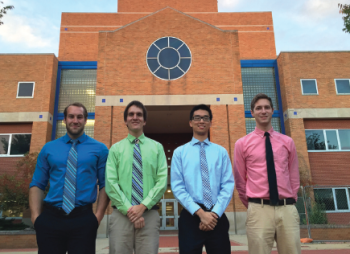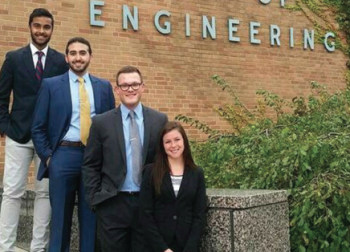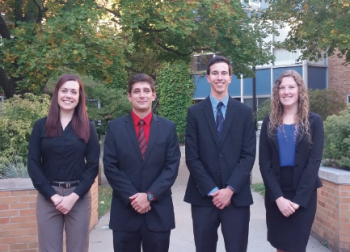ME 491 International Humanitarian Engineering is a design-intensive interdisciplinary course in which teams of students address the challenges of creating new products that enhance the lives of the poor, while respecting their social, cultural and ethical identities.
The following projects are on display during Design Day from 9:00 until noon in the 1200 Hallway of the Engineering building:
Appropriate Technology Collaborative-Guatemala: Macadamia Nut Husker
In Guatemala, over half the population lives below the extreme poverty line. Additionally, Guatemalans suffer from the highest rate of chronic malnutrition in Latin America. The Appropriate Technology Collaborative, a nonprofit organization dedicated to using sustainable technologies to help low-income people, has a goal of improving this situation by building a macadamia nut husker for Guatemalan farmers. Macadamias are a rapidly growing industry, as well as a good source of several important nutrients.
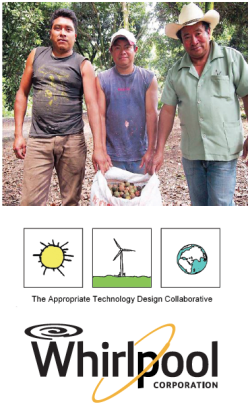 After macadamia nuts are harvested, the husk must be removed within a twenty-four-hour window or mold will begin to grow. Macadamia husks also harden and become more difficult to remove after this time period. It is important not to break the shell of the nut during this process, because the nut must be dried before being cracked. Currently, many farmers sell their macadamia nuts in-husk, at a lower profit. Those with access to hand-powered huskers produce mostly B-Grade broken nuts, though husking nuts by hand is tedious and laborious.
After macadamia nuts are harvested, the husk must be removed within a twenty-four-hour window or mold will begin to grow. Macadamia husks also harden and become more difficult to remove after this time period. It is important not to break the shell of the nut during this process, because the nut must be dried before being cracked. Currently, many farmers sell their macadamia nuts in-husk, at a lower profit. Those with access to hand-powered huskers produce mostly B-Grade broken nuts, though husking nuts by hand is tedious and laborious.
The objective of this project is to create a device that can remove the husks of the macadamias quickly without breaking the nut, which will ensure that Guatemalan farmers will not lose any of their harvest. By improving the efficiency of this process, farmers can increase their income and improve their quality of life.
Appropriate Technology Collaborative-Guatemala: Solar Food Dehydrator
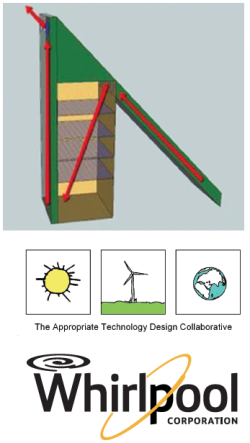 The citizens of Panyebar, Guatemala, lack the ability to feed their children properly. A lack of micronutrients hinders the development of these young children, leading to stunted growth, muscle and joint pain, fatigue, and many other symptoms which can hamper a child’s educational and physical development. Whereas Panyebar’s citizens grow the required micronutrients to feed themselves and their children, they do so only on a seasonal basis and otherwise-nutritious food rots before the next harvesting season. In Panyebar, it is the lack of proper storage techniques that causes malnutrition rather than an insufficient supply.
The citizens of Panyebar, Guatemala, lack the ability to feed their children properly. A lack of micronutrients hinders the development of these young children, leading to stunted growth, muscle and joint pain, fatigue, and many other symptoms which can hamper a child’s educational and physical development. Whereas Panyebar’s citizens grow the required micronutrients to feed themselves and their children, they do so only on a seasonal basis and otherwise-nutritious food rots before the next harvesting season. In Panyebar, it is the lack of proper storage techniques that causes malnutrition rather than an insufficient supply.
Monika Goforth, the director of the Panyebar Education and Nutrition Center, and the team at MSU believe that the best solution for this problem is a solar food dehydrator. A solar food dehydrator dries food so that it can be stored for much longer periods of time. This device will enable the citizens of Panyebar to have sufficient micronutrients to sustain them from harvest to harvest and may permit surplus food to be sold at local markets. Therefore, the goal of this MSU design team is to provide the citizens of Panyebar with a solar food dehydrator.
This dehydrator will provide a year-round supply of micronutrients and a new source of income. It will incorporate sufficient thermal capacity to prevent foods from molding when there is no solar radiation, and it will be manufactured with processes and materials available in Panyebar. A manual for the manufacture and operation of the food dehydrator will also be written.
Nutri-Fresh Farm & Agri-Hub-Kenya: Processing Cassava Roots Into Flour
“We cannot solve our problems with the same thinking we used when we created them.” As this quote by Albert Einstein suggests, forward thinking is required to discover solutions to current problems. Many Kenyans today face problems such as poor living conditions, inconsistent food sources, and a lack of micronutrients which result in stunted growth and malnutrition. However, a popular dish in many parts of Kenya is Ugali. Ugali is a food with a consistency similar to that of porridge. It is often made with maize. Stable food sources such as cassava (which can also be used in traditional dishes such as Ugali) are eaten by a majority of the Kenyan people, and are a major staple in many Kenyan diets.
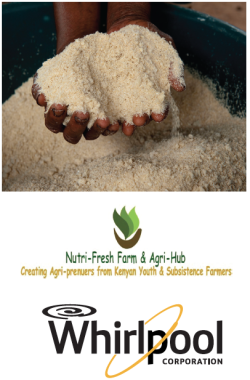 Today in Kenya, the cassava plant plagues the majority of farmers. Cassava is a tuberous root from a tropical tree. It looks much like a sweet potato, only larger. However, the problem does not lie in the plant itself but in its short shelf life, due to postharvest physiological deterioration (PPD). After harvesting, the cassava root begins to break down within 72 hours, and the crop is soon considered unusable. The plant also contains cyanogenic glycosides which are converted into cyanide in the digestive system. These toxins must be handled properly during processing to prevent ingestion of cyanide at unsafe levels, which can result in paralysis and death.
Today in Kenya, the cassava plant plagues the majority of farmers. Cassava is a tuberous root from a tropical tree. It looks much like a sweet potato, only larger. However, the problem does not lie in the plant itself but in its short shelf life, due to postharvest physiological deterioration (PPD). After harvesting, the cassava root begins to break down within 72 hours, and the crop is soon considered unusable. The plant also contains cyanogenic glycosides which are converted into cyanide in the digestive system. These toxins must be handled properly during processing to prevent ingestion of cyanide at unsafe levels, which can result in paralysis and death.
Our team plans to develop a process and device that will allow the cassava root to be easily and quickly converted into a safe, more stable form. The goal is to lengthen the shelf life of the cassava root from 72 hours to one year by processing the root into flour. The device will be human-powered, and the process will assure the toxins within the root are brought to safe consumption levels regardless of plant variety. Because of the longer shelf life of the flour, relative to the raw cassava root, food supplies will be increased by reducing the spoilage caused by PPD. This will not only give families access to more food throughout the year but increase the annual income of small-scale farmers as more product can be sold due to decreased waste.
Symbiosis-India: Human-Powered Machine that Collects Urban Trash
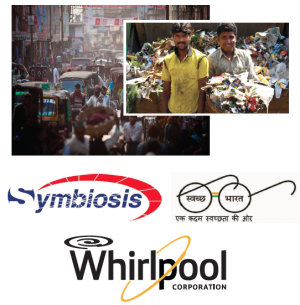 India is a land of disparities. It is the fastest growing nation in the world, yet the majority of its people lack access to clean drinking water and a basic sanitation infrastructure. To catapult India from the status of a developing nation to a developed nation, the Government of India has launched a novel program under the name of the Clean India Initiative. This initiative addresses seven basic sanitation and public health problems that are evident on a large scale in India. Implementing this scheme for a population of 1.2 billion people on seven varied fronts is no mean undertaking and this is where a team of MSU students believe they can make a difference.
India is a land of disparities. It is the fastest growing nation in the world, yet the majority of its people lack access to clean drinking water and a basic sanitation infrastructure. To catapult India from the status of a developing nation to a developed nation, the Government of India has launched a novel program under the name of the Clean India Initiative. This initiative addresses seven basic sanitation and public health problems that are evident on a large scale in India. Implementing this scheme for a population of 1.2 billion people on seven varied fronts is no mean undertaking and this is where a team of MSU students believe they can make a difference.
One of the facets of the Clean India Initiative is public sanitation. In association with two high-ranking officials from the Government of India and the local IT Company Symbiosis, the MSU team plans to help bring about a change by designing an off-beat machine that would clean public spaces in India. This machine will be built under constraints like cost and locally available resources, with the intention of trying to spark a change in the mindset of the masses in India. The team feels that this project could be a part of the broader picture as such a project is universally applicable. If this kind of project could succeed in a byzantine land like India, it has the potential to succeed in any part of the world.
Nutri-Fresh Farm & Agri-Hub-KENYA: Operation Irrigation Greywater Filtration Device
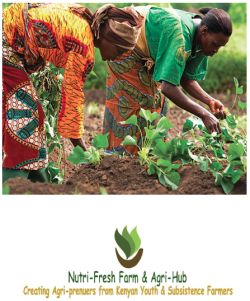 Kenyans suffer greatly from food insecurity; some must resort to stealing lions’ prey in order to eat. To many Americans, this may seem surprising and disturbing but to some Kenyans it is a way of life. What if they could safely and consistently grow their own food? This team’s project is to enable just that.
Kenyans suffer greatly from food insecurity; some must resort to stealing lions’ prey in order to eat. To many Americans, this may seem surprising and disturbing but to some Kenyans it is a way of life. What if they could safely and consistently grow their own food? This team’s project is to enable just that.
 Nutri-Fresh Farm & Agri Hub is a model farm that obtains, shares, and performs practical demonstrations of the latest agribusiness innovations. They are a non-governmental organization (NGO) with which the MSU team works; its headquarters are in Thika, Kenya. Simon Wachieni is the MSU contact there who defines greywater as water that has been contaminated with household soaps and cooking oils. The team’s project is to filter this water so that it is suitable for irrigation of spinach, tomatoes, kale, and strawberries. These crops are priceless to the Kenyan people and are their main defense against malnutrition.
Nutri-Fresh Farm & Agri Hub is a model farm that obtains, shares, and performs practical demonstrations of the latest agribusiness innovations. They are a non-governmental organization (NGO) with which the MSU team works; its headquarters are in Thika, Kenya. Simon Wachieni is the MSU contact there who defines greywater as water that has been contaminated with household soaps and cooking oils. The team’s project is to filter this water so that it is suitable for irrigation of spinach, tomatoes, kale, and strawberries. These crops are priceless to the Kenyan people and are their main defense against malnutrition.
The MSU team seeks to engineer a greywater filtration device from PVC, plastics, natural materials and other common supplies. This filtration system will filter 60-100 L/day, and each family in need will have their own. Clean filtered water will then be fed to a drip irrigation system.
Semilla Nueva-Portable Pigeon-pea Thresher
Guatemala is a small country in Central America with a population of about 15.5 million, 54 percent of whom live on less than $2 a day. According to USAID, “over half of children under five are chronically malnourished and stunted due to lack of access to and improper utilization of nutritious foods.” Currently, many organizations are analyzing the agricultural crops and techniques used by Guatemalan farmers to develop viable solutions to this nutrition problem.
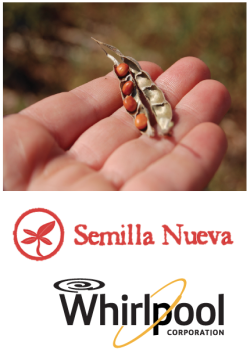 Most farmers in Guatemala grow corn as their primary crop. Semilla Nueva, an NGO based in Guatemala, asserts that corn does not provide enough nutrients and protein for the local communities. Furthermore, corn can severely damage the soils and Guatemalan corn cannot compete in global commodities markets. For these reasons, Guatemala is beginning to experiment with the growth and harvesting of different kinds of crops such as pigeonpea. Pigeonpea is a crop that can reduce soil damage, combat malnutrition, and increase the profits for farming families in Guatemala. Semilla Nueva reported that two years ago it helped 30 families plant pigeonpea. Today almost 1,000 plant it. Reports have been published describing how countries like Tanzania and Mozambique have also switched to pigeonpea.
Most farmers in Guatemala grow corn as their primary crop. Semilla Nueva, an NGO based in Guatemala, asserts that corn does not provide enough nutrients and protein for the local communities. Furthermore, corn can severely damage the soils and Guatemalan corn cannot compete in global commodities markets. For these reasons, Guatemala is beginning to experiment with the growth and harvesting of different kinds of crops such as pigeonpea. Pigeonpea is a crop that can reduce soil damage, combat malnutrition, and increase the profits for farming families in Guatemala. Semilla Nueva reported that two years ago it helped 30 families plant pigeonpea. Today almost 1,000 plant it. Reports have been published describing how countries like Tanzania and Mozambique have also switched to pigeonpea.
One problem with this new crop is that currently there is no low-cost method of removing the peas from their pods. The goal of this project is to create such a device to increase the number of peas harvested, thereby enhancing the health and wealth of Guatemalan communities without negatively affecting low-income farmers.


